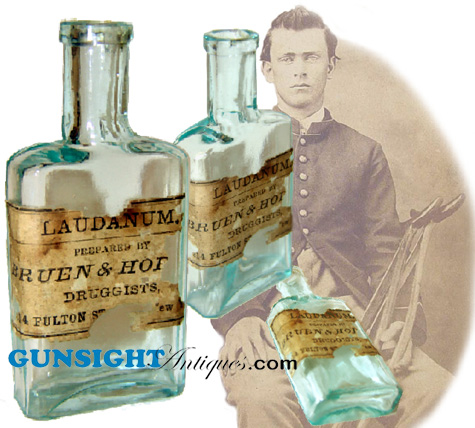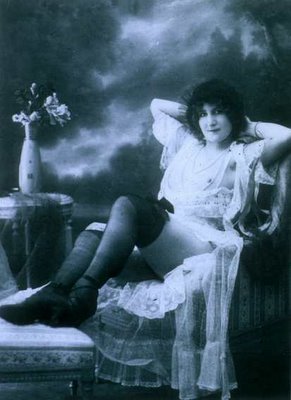Thursday, November 17, 2005
Decadence (the fun stuff)

Opium smokers in the East End of London, 1874

Laudanum
Laudanum was a wildly popular drug during the Victorian era. It was an opium-based painkiller prescribed for everything from headaches to tuberculosis. Victorian nursemaids even spoon fed the drug to cranky infants, often leading to the untimely deaths of their charges.
Originally, Laudanum was thought of as a drug of the working class. As it was cheaper than gin it was not uncommon for blue-collar men and woman to binge on laudanum after a hard week's work. Use of the drug spread rapidly. Doctors of the time prescribed it for almost every aliment. Many upper-class women developed habits.
The outbreak of tuberculosis may have been another factor in the drug's rising popularity. For a short period of time the tuberculosis "look" (very pale skin and frequent fainting spells) was quite in vogue. Victorian women went to great lengths to emulate the look, often taking arsenic to pale the skin (slowly poising themselves to death).
Laudanum's biggest clam to fame however was its use by the romantic poets. Many of the Pre-Raphaelites (Among them Lord Byron, Shelly and others) were know to indulge. The image of the romantic poet, pale, morose, drunk on absinthe and laudanum is a common one. The film Gothic portrays the stereotypical image of that society. In reality, most of the PRB were heavy drinkers first and formost. 
Because of its easy, inconspicuous consumption, many Victorian writers and artists chose to satisfy their "yens" for opium by taking it in the laudanum form. In this way they could develop a private, discrete habit rather than sharing their vice with strangers at opium dens, where the drug was smoked by passing pipes from one user to another.
Elizabeth Barrett Browning began swallowing laudanum to treat her childhood spinal tuberculosis and became a lifelong addict, even suffering from a miscarriage due to her abuse of the substance. But the drug also provided a source of poetic inspiration. Letters exchanged between Elizabeth and Robert Browning are filled with images of scarlet poppies, alluding to Elizabeth's laudanum addiction.Elizabeth Siddal, Charles Dickens and Wilkie Collins.
Finally.....as all good rock stars know, if you have drugs and music then the next thing is:

